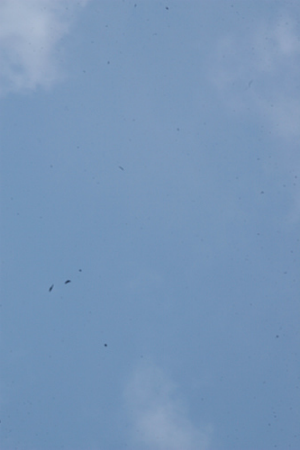
For most Digital SLR users, one thing that is unavoidable is dust on your sensor. Some like to do sensor cleanings at home, others are nervous that they will damage something and have professionals do it for them. The biggest advantages of DIY are convenience and not being without; the biggest advantages of having a pro do it are quality and cost (you mess it up and it’ll cost you big time). At any rate, there are three basic levels of sensor cleaning.
The first level is what we consider a “Field Cleaning†where the sensor is cleaned in an uncontrolled environment; it is akin to what some do at home using a sensor cleaning kit. Before the sensor can be cleaned however, a basic cleaning of the exterior of the camera needs to be performed in order to limit the exposure of dust and other foreign materials. A quick superficial test of functions is also performed just to see if the cameras functionality has the overall appearance of being to spec. Next an image is taken to check for dust with a “normal†focal length (Full Frame: 50mm / APS: 35mm) the lens focus set to infinity and an aperture value of 16 or higher pointed at a calibrated even light source. The image is then loaded onto the computer to be inspected for spots. At the same time the Exif data is evaluated. Only the visible spots under the above circumstances are removed in a Level one cleaning.
Levels Two and Three are very similar and are done in a controlled environment (emphasis on controlled environment). It is begun with a thorough external cleaning that includes cleaning of the battery chamber, media slots and connection ports. The cameras functions are then extensively tested physically and then electronically using manufacturer software in concert with some tech tools. Available firmware updates not already on the camera are installed too. The image test outlined in the previous paragraph is then done and the sensor is cleaned. Level Three goes beyond by completely disassembling the camera and cleaning it out. Level Three cleanings are considered full repairs and are usually only performed in situations where there is a severe known contamination (sand, liquid, food, etc.).
If you are using the camera getting dust on your sensor is inevitable. This is because as you change your lenses and/or zoom them (zooming creates suction) particulates in the air or that have settled on your camera find their way into the mirror box. As you take pictures the mirror and the shutter creates turbulence that kicks that stuff all around and eventually lands in places you don’t want it to. The cameras that have their own self cleaning mechanism work okay but don’t always get it all; dust just gets stuck real good. The dust doesn’t always have somewhere to go after the self cleaning cycle either and gets kicked around until it ends up back on your sensor. Granted some of them have a sticky trap or an attractor/repellent of some kind but even they don’t work 100% of the time and will eventually need to be cleaned or replaced. Bottom line in the lifetime of the camera, with or without these safeguards, you will most certainly find yourself with stuck on dust.
Post image by Flickr user puuikibeach